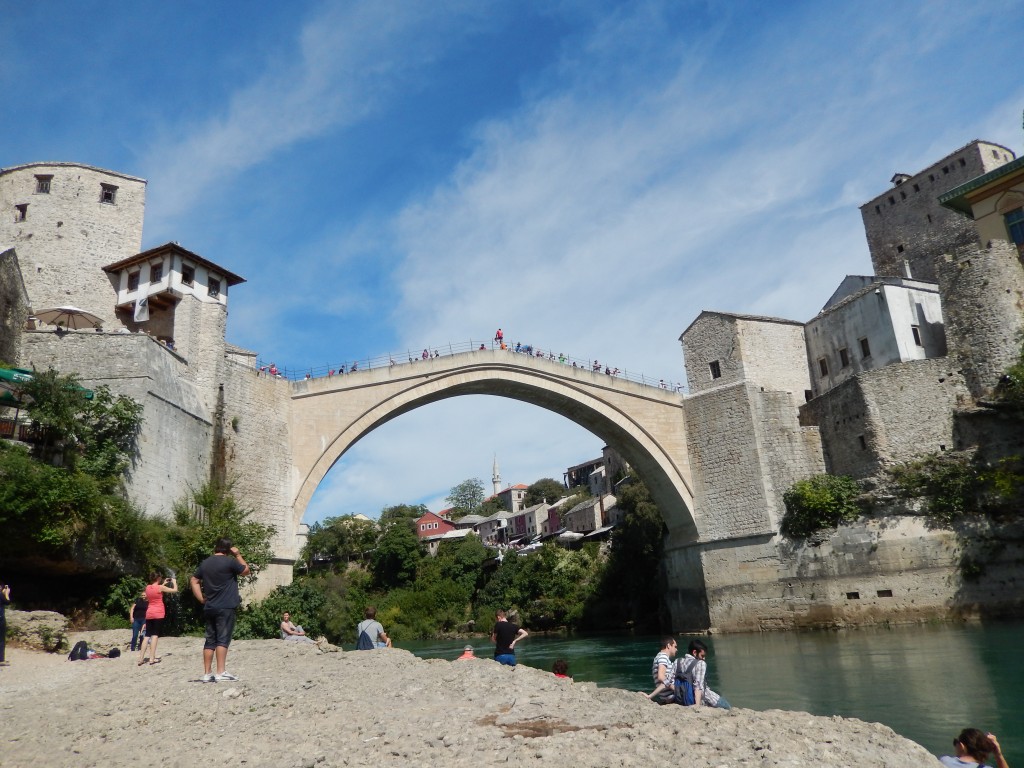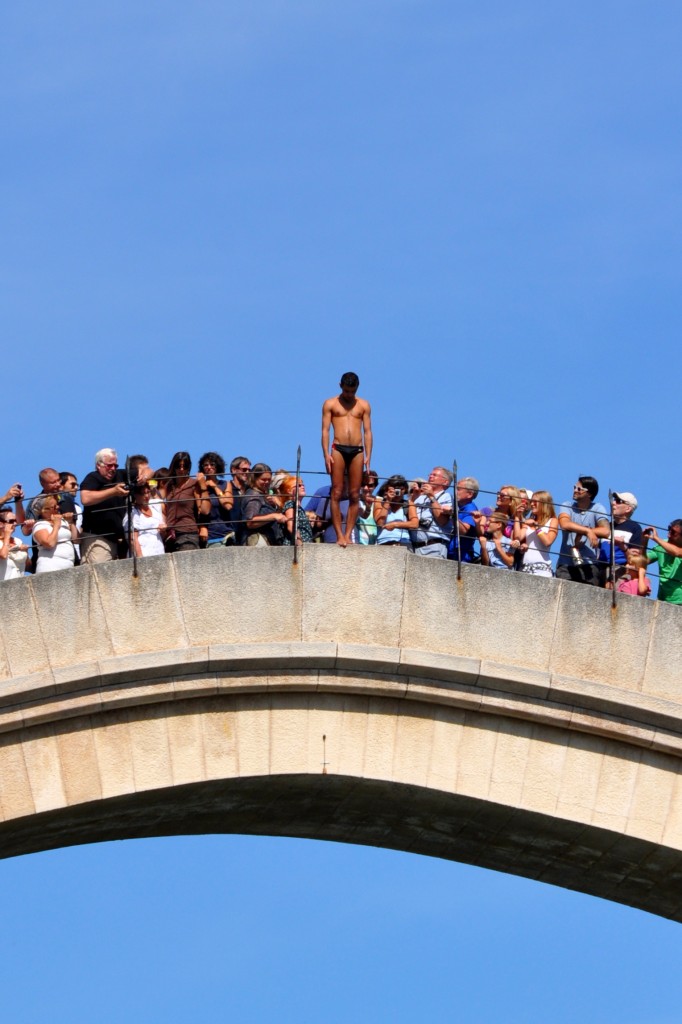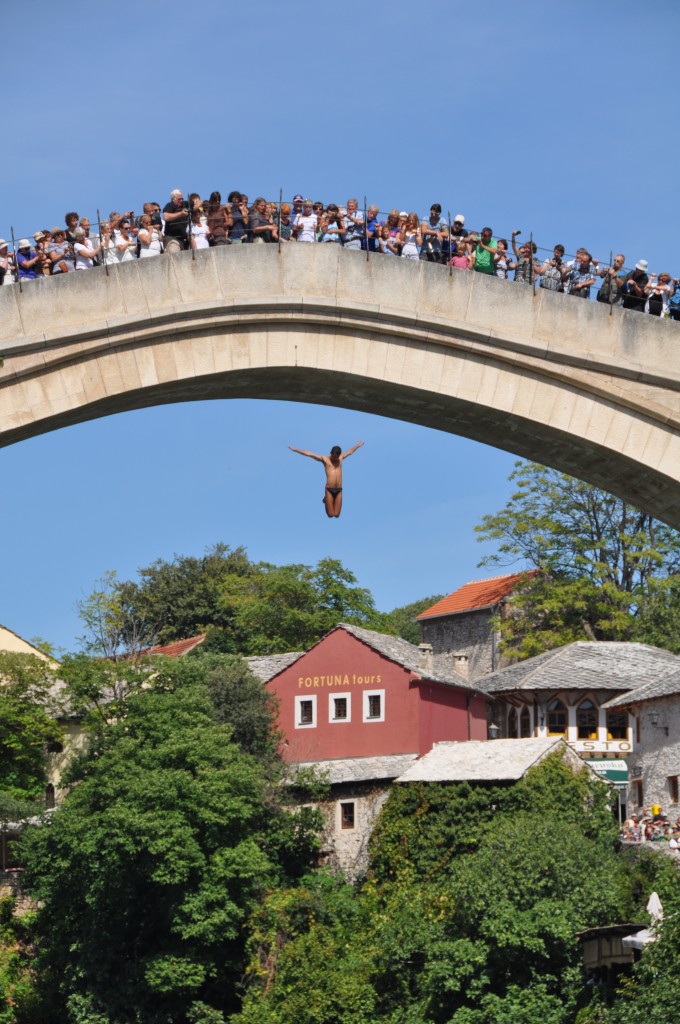Trying to understand all the intricacies of the breakup of Yugoslavia during the 1990s and its accompanying military conflicts was about as challenging as trying to understand the Israeli-Palestinian conflict. For me, these issues were just fleeting news reports that interrupted my viewing of Saved by the Bell or Beverly Hills, 90210. Now, as “adults”, I know that Joe and I are both really thankful for the opportunity to visit places and learn about issues in the world that were occurring while we were alive, but seemed so vague and far away. We never would have visited Bosnia & Herzegovina if it wasn’t for the Olmsted Foundation – it has changed our lives and our view of the world in countless ways. I am not a historian, and have in fact been humbled with my lack of historical knowledge more times in the last two years than I can count. Any misrepresentation of facts from here on in was made inadvertently, but with an earnest attempt to comprehend a complex decade of war and genocide, “Europe’s deadliest conflict since WWII.”
Getting to Mostar was a lesson/adventure in and of itself. Our GPS refused to enlighten us with her ample wisdom, which we so often depend on. In fact, she wouldn’t even acknowledge that we were on a certifiable road. The screen was just totally blank…for hours…as if we were in a wasteland. Reverting back to our Drivers-Ed skills, we used street signs (who would have thought?!). Most of the signs were bi-lingual and many of them had been vandalized, with one language unrecognizable under the spray paint – evidence of persistent racial and religious tensions.
We actually learned the most about Mostar at the War Photo Limited Museum in Dubrovnik the day before, where history is told through the photos and first-hand accounts of journalists. Mostar saw its toughest days during the Bosnian War. In April of 1992 it was bombed by the Yugoslav People’s Army (JNA), who surrounded the town and shelled it from the hills above. The JNA controlled the east bank of the Neretva River, which put the Stari Most (Old Bridge) on the frontline.
The bridge was completed in 1566, after nine years of building, and at that time was the widest man-made arch in the world. Pedestrians safely crossed Stari Most for 427 years, until it was destroyed in November of 1993 by a Bosnian-Croat tank bombardment. In the War Photo Limited Museum, there are pictures of the bridge completely covered with wood, in order to protect citizens from snipers hidden in buildings. During the battle for Mostar, the east bank of the Neretva was under siege and residents had no water or electricity. They had to wait in line for food and water and collect firewood (which was extremely dangerous due to the snipers) in order to cook and keep warm.
Stari Most was rebuilt in 2004 and is alive and well with tourists today. Men from the Mostar Diving Club will collect money and then launch themselves off the top of the bridge several times a day.
Except, they don’t dive…they jump. So, it is really more like a “Jumpers Club”, but that just doesn’t sound right.
Before leaving Mostar, we took a walk along the former Front Line. Burned (or bombed) out buildings still remain on every corner and even the word “Sloboda” (nickname for Slobodan Milošević) was written in huge letters on a building.
Progress is slow. The people who were involved in the Yugoslav Wars (on all sides) are still young and strong, which means that opinions and beliefs are still strong, even when they are no longer supported by a changing political landscape. From my experience in Germany, it will take the generation that isn’t even walking yet, and the generation that hasn’t been born yet, to really shape this region into what it is going to be. I hope we are lucky enough to visit again decades from now, and see how it has changed.



